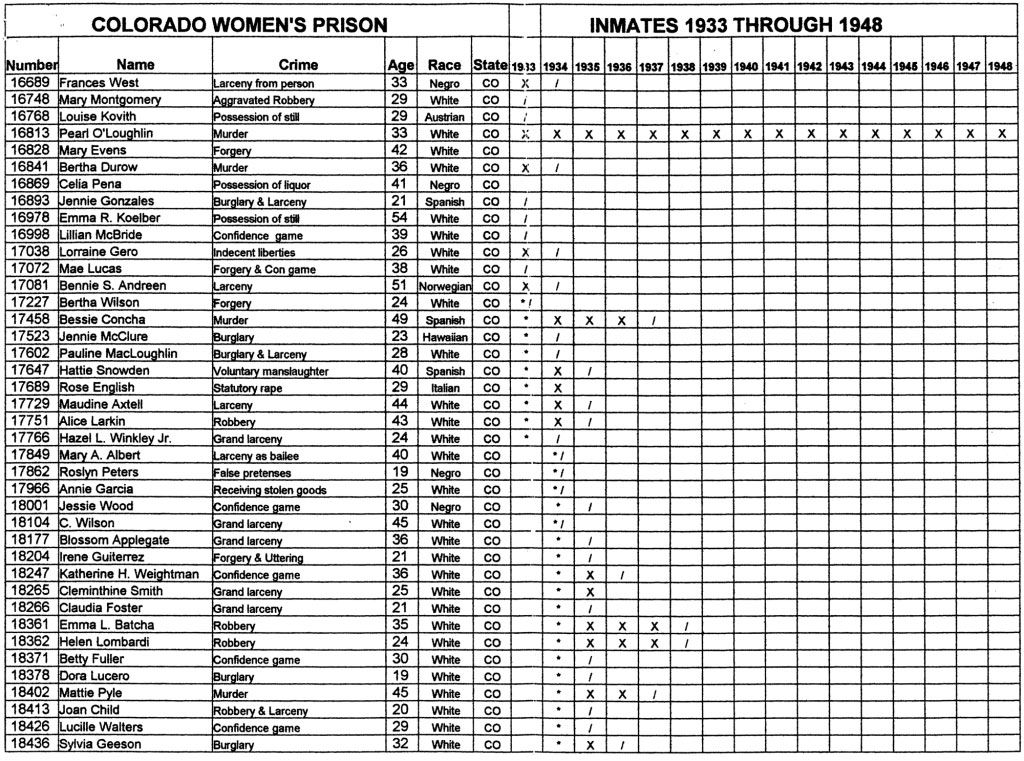
Story
Before Orange, Before Black: A Brief History of the Colorado Women's Prison
Long before "Orange" became the "New Black," female inmates at the Colorado Women's Prison, part of the State Penitentiary in Canon City, were navigating close quarters on strict schedules with limited access to educational resources. Learn more about this historical women's penitentiary that is reused today as a museum.
Established by an act of the Colorado Territorial Legislature in 1871, the Territorial Prison in Canon City was constructed using natural stone quarried on the site of the 25-acre prison grounds. It was the first of six territorial penitentiaries to be constructed before Colorado became a state and was renamed Colorado State Penitentiary when Colorado achieved statehood in 1876. The location of the prison was decided with the support of Denver legislators. In turn for Denver’s support, Canon City voted Denver as the state capital over Golden.
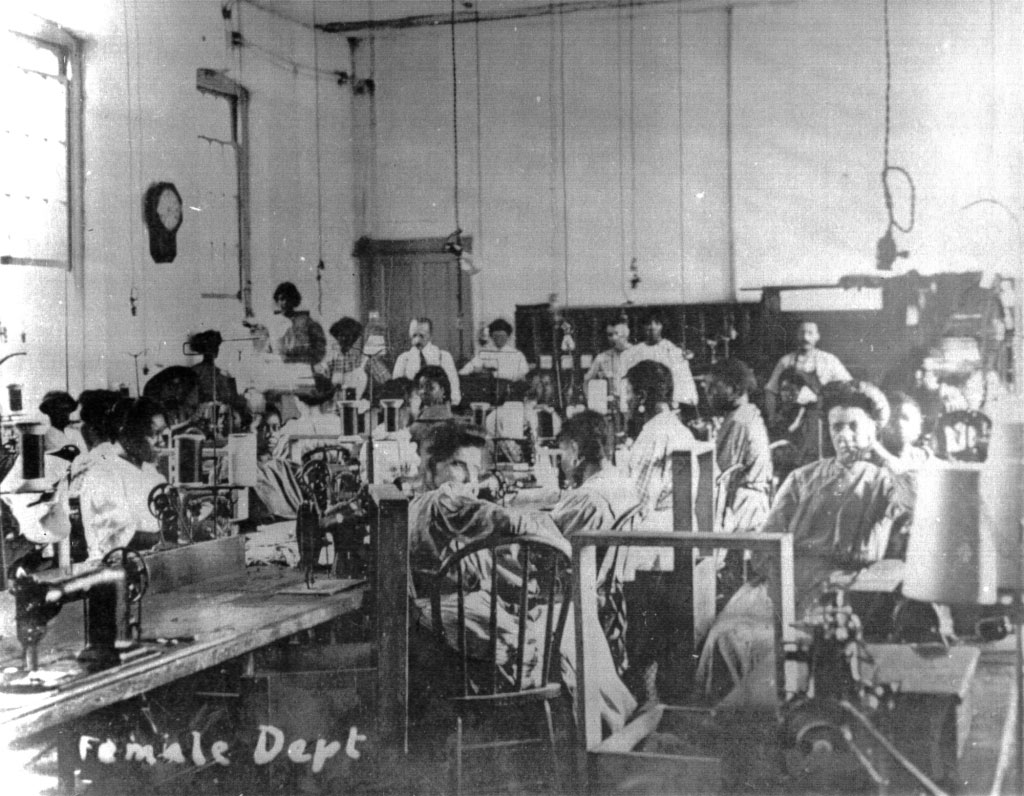
Sewing Industry Room, 1909
The first woman prisoner, Dr. Mary Solander, arrived in March of 1873, just a few years after the prison was built, and was imprisoned for manslaughter, a death supposedly caused by an abortion gone awry. Dr. Solander was housed in the original prison building, but prior to her imprisonment, women were typically confined to jails in local sheriff’s offices rather than sent to prison, so her arrival caused a stir.
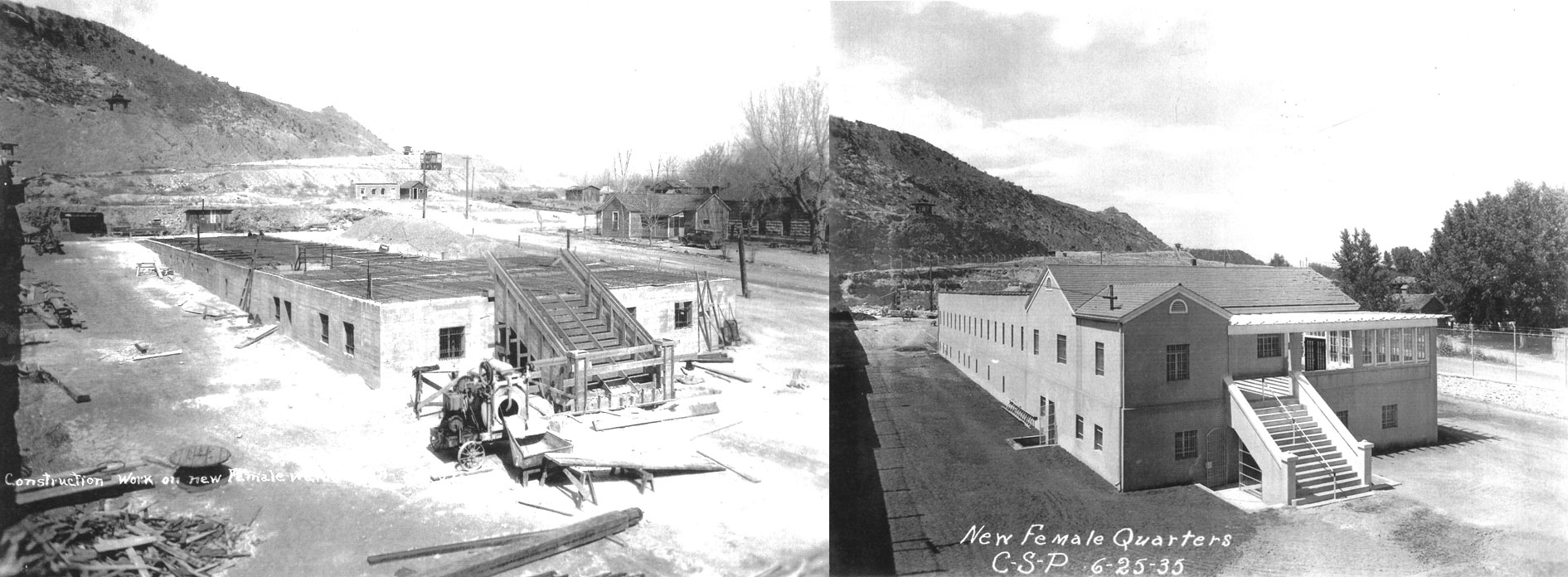
(Left) Construction of the women's ward, March 1934. (Right) The completed building.
As the population of female inmates grew, the administration was keen on separating the women from the men to keep them in a low profile position among the prison population. Three women’s buildings were later constructed on the penitentiary grounds. The first one, built in 1884, only had six cells. The three others were built in 1895, 1908, and 1934, respectively, due to overcrowding. As the penitentiary grew, the earlier constructed buildings were absorbed into the men's complex; only the 1934 building remained distinct from the complex and served women exclusively.
From 1904 to the 1920s, women at the prison spent time cooking, cleaning, doing laundry, gardening, and making underclothing for male inmates, but recreational activities, such as elementary reading and writing classes and croquet in the courtyard, were available as a reward for good behavior. Female inmates were also given the opportunity to further their education through elementary reading and writing classes.
Though male and female inmates were kept mostly separated, the official segregation policy wasn’t imposed until 1934, when prisoners constructed a two-story stucco building to house female inmates—called “residents” to give them a sense of dignity—which resulted in Colorado becoming one of the first states in the Rocky Mountain West to have a women’s prison.
Upon the completion of the building, all vocational training was removed from women inmates and given to the men. Males were prepared for life “on the outside,” while no such opportunities were given to the women, who were still taught “domestic science,” which was believed to be the only skills of value for them. Community volunteer teachers and clergy spent time administering classes to the male prisoners. Conversely, the women’s building had no classrooms; female inmates were allowed to learn skills like sewing or music in the hall outside their cells or in the dining room. The situation remained this way through the mid-1950s.
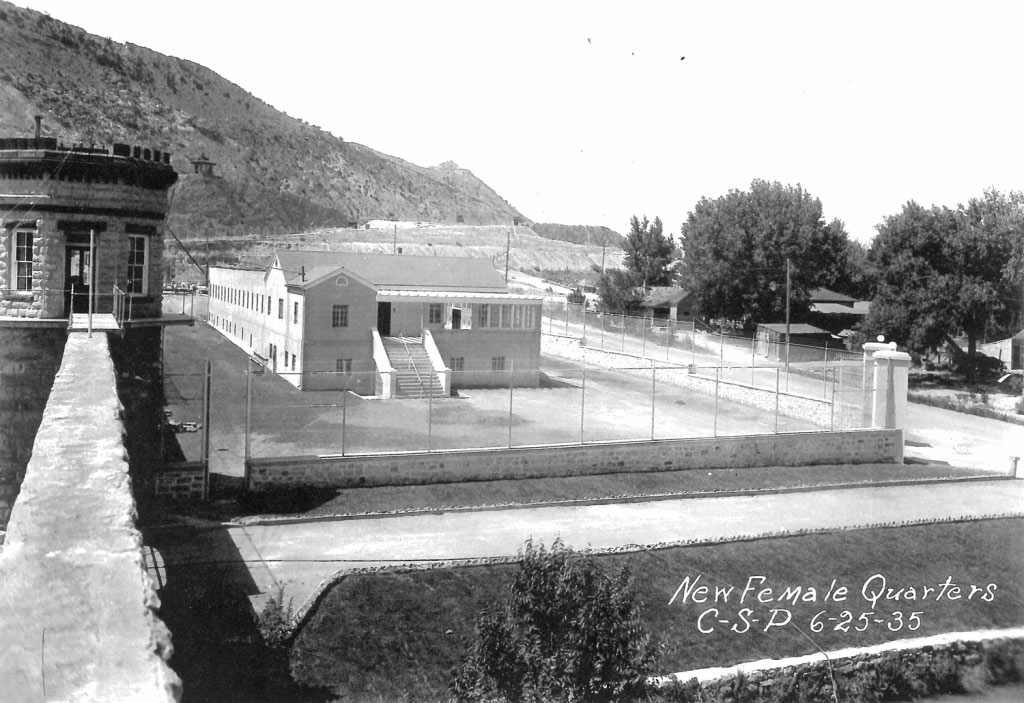
Women's ward, June 1935. (Note the stone tower on the left -- this is part of the main complex for housing male inmates.)
Although the women had fewer opportunities to learn skills for the real world, the women’s section was much more like a dormitory than the men’s section. The daily life of women inmates in the 1940s was documented by Helen Kinney, a former matron at the women’s prison. The matrons kept order in the women’s prison in shift rotations. The head matron came in at 7 a.m. and stayed until 3 p.m. Every morning, women inmates performed domestic chores and were expected to clean their cells --which were referred to as “houses.”
Each “house” contained a bed, a toilet, a sink and a cupboard. When the afternoon matron came in from 3 pm to 11 pm, she made sure chores had been done and made sure the women went to sleep at 9 pm. The night matron came in at 11pm and stayed until 7 am when the Head Matron came in once again. The night matron performed hourly checks on inmates to make sure all were in their cells.
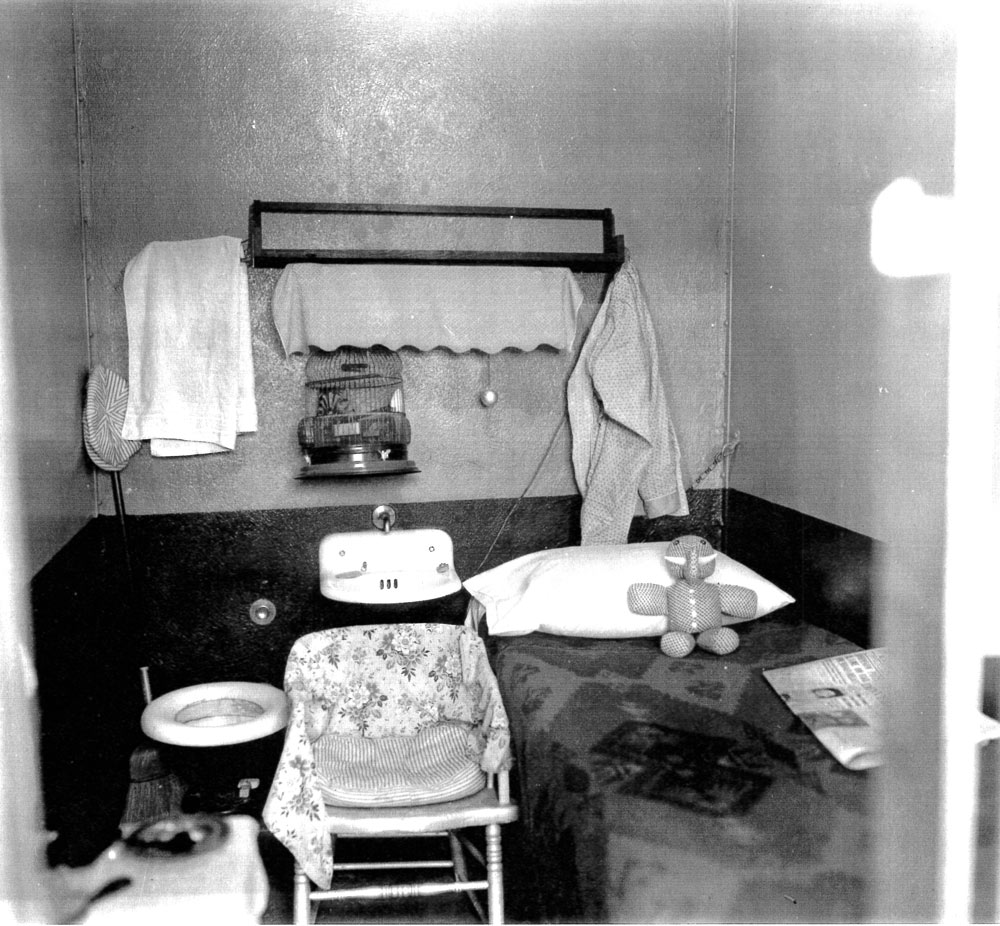
Interior of female cell, 1909.
Part of Helen Kinney’s accounts note that many women came in with tattoos, especially those who had been in the Navy, but the tattoos were removed by the on-site dentist as part of the women’s rehabilitation and reformation philosophy and practice.
Despite the construction of new women’s buildings throughout the years, the women’s section always remained much smaller than the men’s section because women were thought to be “nurturing” and “innocent” and often, courts were reluctant to incarcerate them. By 1965, however, overcrowding led to the construction of the Colorado Women’s Correctional Facility, which is still in use today.
The 1934 building was used for various governmental purposes over the years until it was told to the City of Canon City and reopened in the 1980s as the Colorado Territorial Prisons Museum, now the Museum of Colorado Prisons. Since 1993, the History Colorado State Historical Fund has awarded $40,000 in grants to the building for structural assessment and roof repair. In 1999, the Colorado Women’s Prison building was listed on the National Register of Historic Places for its significance in women’s history.
Learn More: If you think this is interesting, you won't believe what's in the National Register nomination form about the property! Read it online.

